The Imperial Era—also known as the Age of the Empire or post-Republic era, and sometimes regarded as the Dark Times or the reign of the Empire—was the time period that covered the reign of the Galactic Empire, lasting from Galactic Emperor Sheev Palpatine's proclamation of the New Order in 19 BBY until the signing of the Galactic Concordance in 5 ABY. The Imperial Era followed the Republic Era which lasted for a millennium, and preceded the short-lived New Republic Era. Its final years overlapped with the Galactic Civil War, a period known as the Galactic Civil War era, the Rebellion era, or the era of Rebellion. Age of Rebellion referred to the time period from 0 ABY to 4 ABY. After the battle of Endor since the death of Sheev Palpatine and his reign of terror came to an end, the one-year period from 4 ABY to 5 ABY became known as the fall of the Empire. Following the rise of the New Republic, the Imperial Era was referred to as the Old Empire era.
The rise of the Empire marked the Sith's return to power. Emperor Palpatine was the public identity of the Sith Lord Darth Sidious whose plan involved the extermination of the Jedi Order. The Great Jedi Purge continued throughout the Emperor's reign, leaving Luke Skywalker as the sole surviving Jedi Knight by the time of the Battle of Endor in 4 ABY. Sidious' reign ended with his first death at the hands of Skywalker's father, the Sith apprentice Darth Vader who sacrificed himself while protecting his son. The Alliance to Restore the Republic rebranded itself as the New Republic, and achieved a decisive victory over the Empire at the Battle of Jakku in 5 ABY.
Despite its defeat, the Empire's reign inspired a generation that was disillusioned by the state of the galaxy under the New Republic, from the Centrists who advocated for strong leadership to the militaristic First Order. The warlord Kylo Ren viewed the Imperial Era as a period of order and stability that the First Order sought to restore. To others such as Senator Leia Organa, the Empire's history was marked by tyranny, oppression, and genocide.
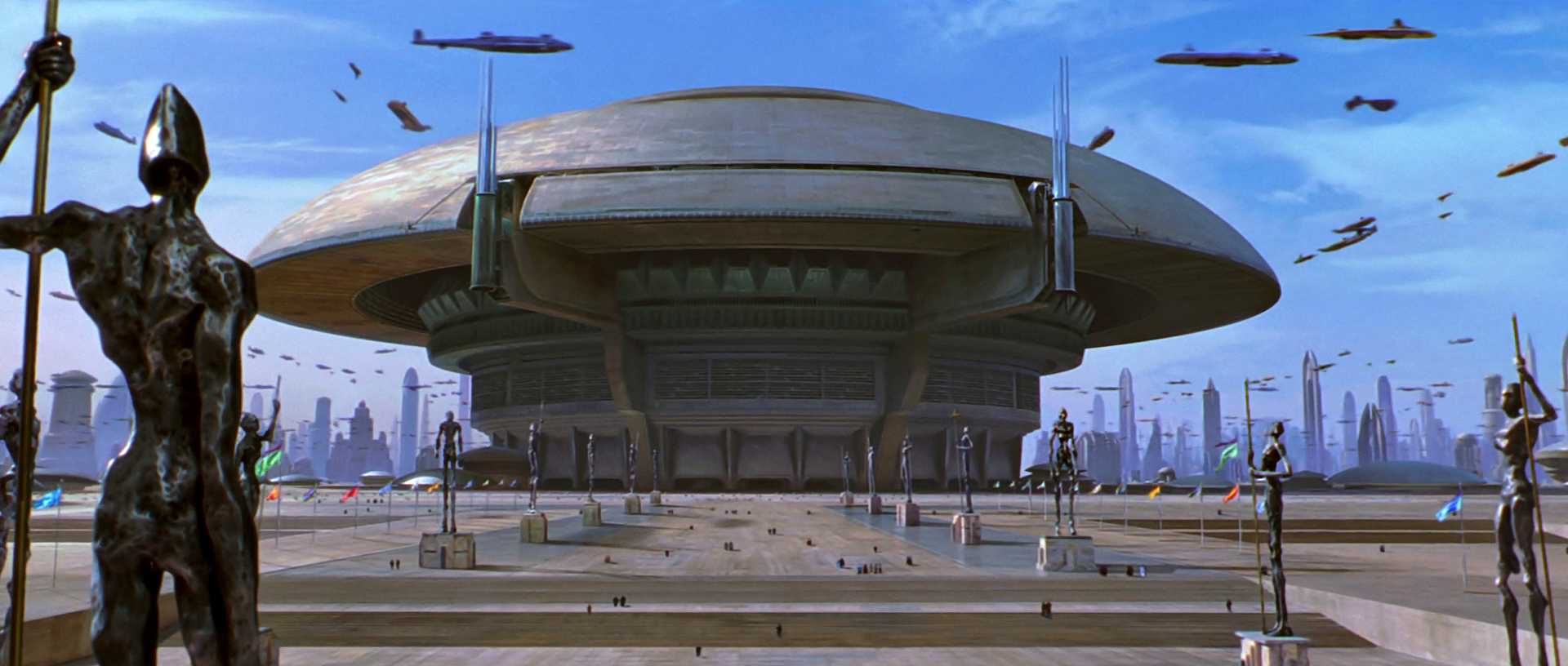
The Republic Era was an age of peace that lasted roughly a thousand years.
The modern Galactic Republic was formed in the aftermath of the last conflict between the Jedi Order and the Sith, ending an age of strife in galactic history. What followed was a period of peace and relative stability known as the Republic Era, in which the Republic governed the galaxy for a millennium under the leadership of the Galactic Senate and the protection of the Jedi Knights. Unknown to the Jedi, the Sith were reformed under Darth Bane's Rule of Two, ensuring their order's survival in the form of a Sith Master and a Sith apprentice. A new lineage of Sith Lords originated from Bane, resulting in generations of Sith that culminated in Darth Sidious, the Dark Lord of the Sith who ultimately achieved his order's plan of revenge against the Jedi.
While the Sith plotted their eventual return to power, the Republic reached the pinnacle of its power and prosperity while expanding into the Outer Rim Territories, resulting in a golden age known as the High Republic Era which also saw the Jedi Order's influence spread to the farthest edges of known space. This period gave way to an age of rampant political corruption and bureaucratic stagnation in the Republic Senate by the time of the Invasion of Naboo in 32 BBY.
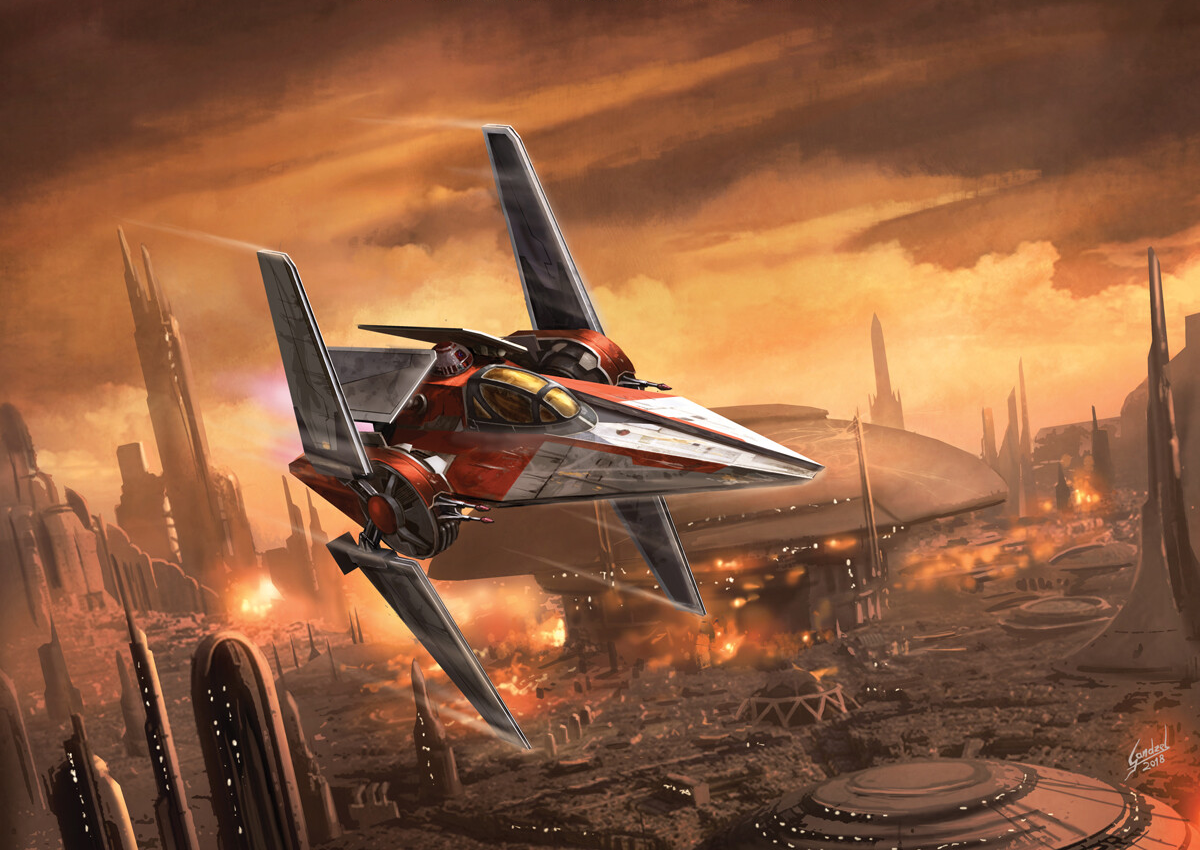
The Republic Era's final years were marked by the Clone Wars.
By infiltrating Republic politics as Senator Sheev Palpatine of Naboo, Sidious secured his election to the office of Supreme Chancellor. As planned, the Palpatine chancellery grew increasingly powerful due to the Separatist Crisis and the subsequent galactic conflict known as the Clone Wars, both of which Sidious masterminded in order to gain more power for himself. The Clone Wars was the first full-scale war since the formation of the Republic roughly a thousand years before the First Battle of Geonosis. The Senate's Jedi peacekeepers lacked the manpower to defend the Republic on a galactic scale, and as such became leaders in the Grand Army of the Republic.
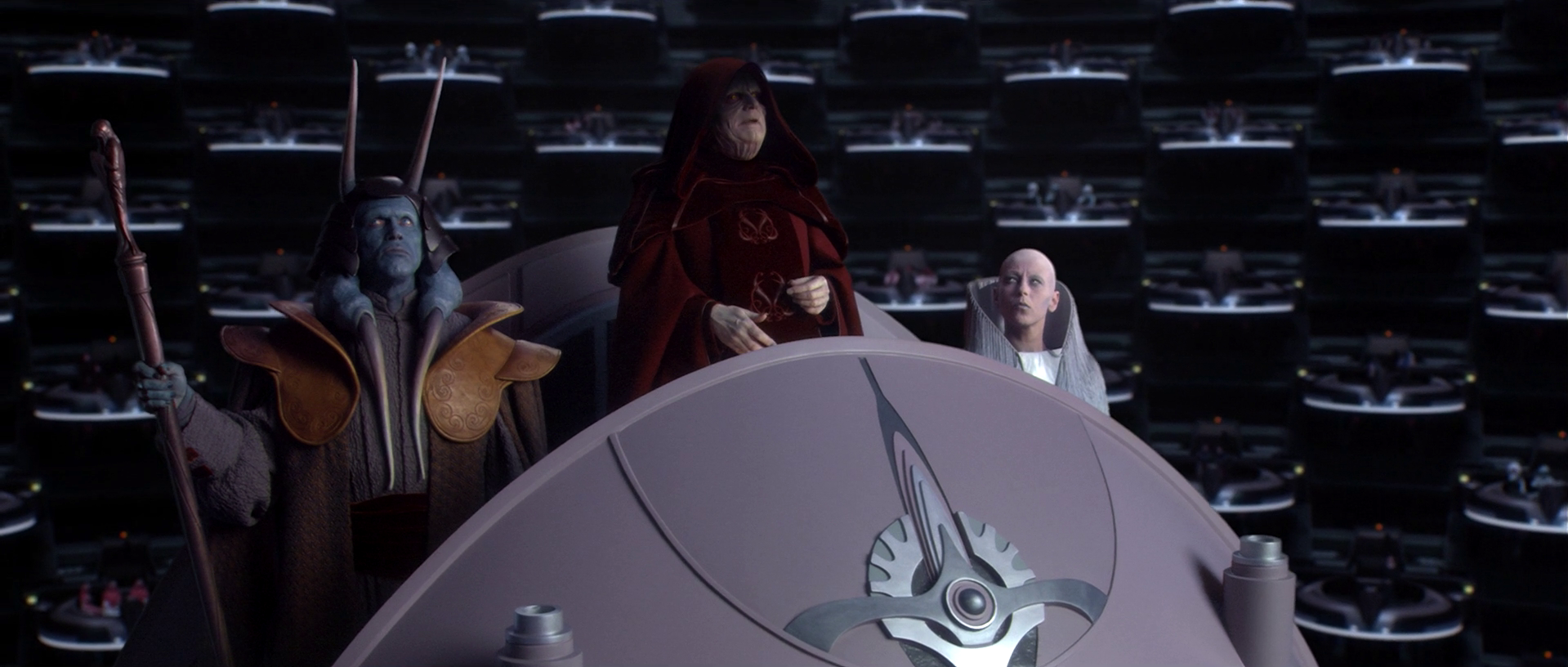
The Imperial Era began when Darth Sidious proclaimed himself Emperor of the Galactic Empire in 19 BBY.
The reign of the Galactic Empire was known as the Imperial Era. The era began with the proclamation of the New Order in 19 BBY, and was characterized by the implementation of Galactic Emperor Sheev Palpatine's political program, referred to as the New Order. Although the Emperor did bring peace to the galaxy as he had promised, that result was achieved through brutal repression. Jedi Master Obi-Wan Kenobi remembered the Jedi Order as guardians of peace and justice in the Galactic Republic; compared to the millennium of the Republic Era, the Imperial Era was a "dark time" from Kenobi's perspective.
During the early days of the Imperial Era, the Emperor's priorities included the shutdown of the cloning facilities on Kamino, the occupation of Raxus and other worlds controlled by the former Confederacy of Independent Systems, and the fulfillment of the Great Jedi Purge through Order 66. The Grand Army of the Republic was reorganized into the Imperial Army, and clone troopers continued to serve in its ranks. However, continued support for the clone trooper program was deemed too high despite the Kaminoans' defense of their enterprise, and the Empire therefore turned to a new stormtrooper program which aimed to replace clones with enlisted soldiers.
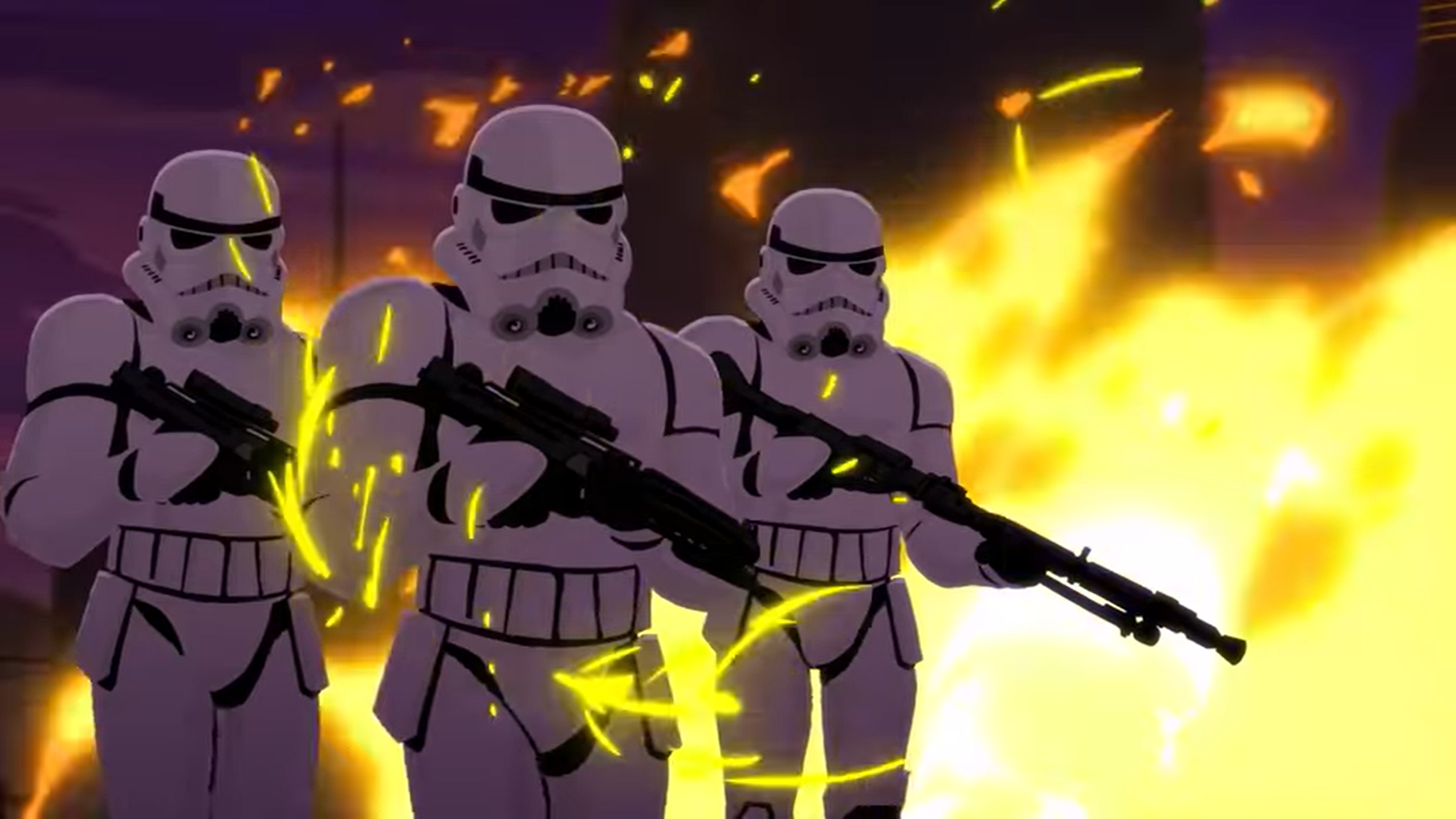
The Imperial Military swept throughout the galaxy, while its ranks were slowly but surely replaced by natural born recruits.
The Clone Wars ended with the demise of General Grievous as well as the deactivation of the Separatist Droid Army subsequent to the slaughter of the Executive Separatist Council by the Sith Lord Darth Vader on Mustafar. The Confederacy of Independent Systems consequently collapsed in a vacuum of leadership, allowing the Empire to seize control of their worlds and resources. While decommissioned battle droids were destroyed, Separatist citizens found their worlds subjugated by the Imperial Military. One such planet was the Separatist capital of Raxus Secundus, where the Empire sought to pacify the civilian population through the use of propaganda and the presence of a large contingent of clone troopers supplemented by All Terrain Tactical Enforcers.
The systematic termination of the Jedi succeeded in reducing the Order's ranks to a small group of survivors who fled into hiding. The remaining Jedi were hunted by their brethren who turned to the dark side of the Force, such as Darth Vader and the Imperial Inquisitors. In addition to the fallen Jedi Knights-turned-Jedi hunters, the final generation of clones grown from the Jango Fett genotype were activated and programmed to fulfill the mandate of the Great Jedi Purge.
The Empire's final years were marked by the Galactic Civil War from approximately 4 BBY until the signing of the Galactic Concordance in 5 ABY. This period within the Imperial Era was known as the "Galactic Civil War era," the "Rebellion era," or the "era of Rebellion."

The Galactic Civil War saw the downfall of the Imperial Era as it faced a growing tide of revolution
The Alliance to Restore the Republic was officially formed when Senator Mon Mothma issued the Declaration of Rebellion after the Ghorman Massacre in 2 BBY. As a result, the Age of the Empire was also an Age of Rebellion in which Mon Mothma's rebel cell, the Phoenix Cell, the Spectres, the Massassi Group, and other Rebel cells united in common cause to overthrow the Empire and restore the galaxy to democratic rule.
Emperor Palpatine disbanded the Imperial Senate in 0 BBY, no longer seeing a necessity in preserving the "last remnant of the Old Republic" after the DS-1 Death Star Mobile Battle Station became fully operational. In the same year, the Death Star was destroyed by the Rebel pilot Luke Skywalker during the Battle of Yavin, killing a large number of soldiers, Imperial officers, and Grand Moff Wilhuff Tarkin. The battle station's destruction was seen as a significant loss by the Emperor, who had neither a ceremonial Senate to keep the star systems in line nor a superweapon to enforce his rule.
At the same time as the Rebellion's war against the Empire, the Crimson Dawn syndicate re-emerged under Lady Qi'ra, who launched a secret war to free the galaxy from the control of the Sith. She focused her efforts on an ancient artifact known as the Fermata Cage, which she falsely claimed contained an ancient Sith Lord to draw both Vader and Sidious in and allow her to lock both away. Unwilling to risk that Sith Lord's possible existence and eager to test themselves against such a foe, Sidious and Vader personally led the Imperial Military to stamp out Crimson Dawn in the battle at the Amaxine Station. Through the intervention of the Knights of Ren, the Cage was destroyed, sending out a Force Wave that disrupted the connection between Force-sensitives and the Force for a time. Additionally, a droid revolutionary from the High Republic Era named Ajax Sigma re-emerged while a droid corruption known as the Scourge spread across the galaxy.
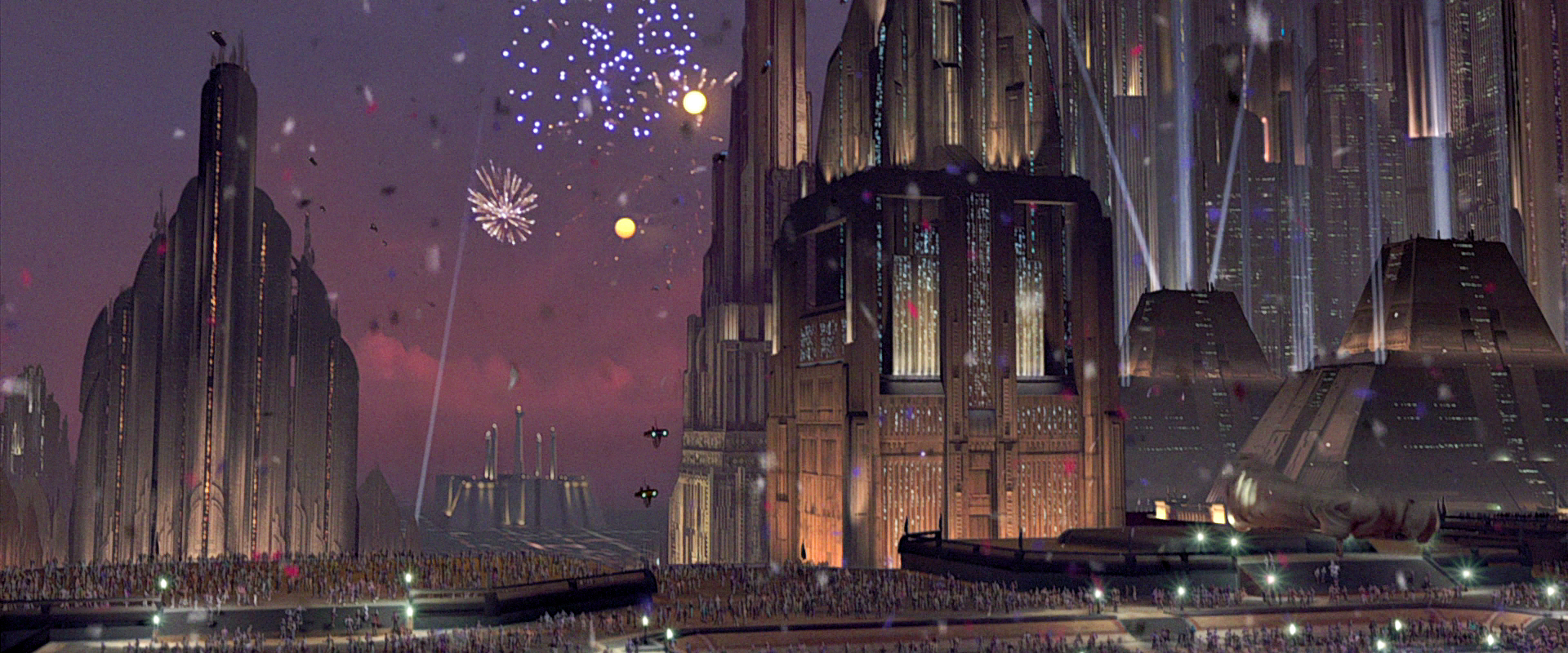
The Emperor's death was celebrated on worlds throughout the galaxy, including the Imperial capital of Coruscant.
The DS-2 Death Star II Mobile Battle Station, meanwhile, was built to replace the first Death Star. Alerted to its existence by two Crimson Dawn agents, Bevelyn and Jon Melton, the Alliance Fleet attacked and destroyed the battle station during the Battle of Endor in 4 ABY. The battle also caused the Imperial Navy to lose several Star Destroyers, including the Executor-class Star Dreadnought Executor, and the Emperor was killed by his Sith apprentice Vader, whose sacrifice fulfilled the Jedi prophecy of the Chosen One. From Bespin and Tatooine, to Naboo and Coruscant, people across the galaxy openly celebrated the Alliance's victory and the Emperor's demise. The city-world of Coruscant was the site of a riot in Monument Plaza where civilians toppled a statue of the late Emperor.
The combination of the Emperor's death and the Empire's final defeat at the Battle of Jakku ultimately marked the end of both the Galactic Civil War and the Imperial Era, resulting in the dawn of the New Republic Era. The Galactic Senate was restored as the New Republic Senate; the Imperial capital of Coruscant was ceded to the New Republic and placed under the administration of a provisional government; and the Empire was reduced to a rump state.
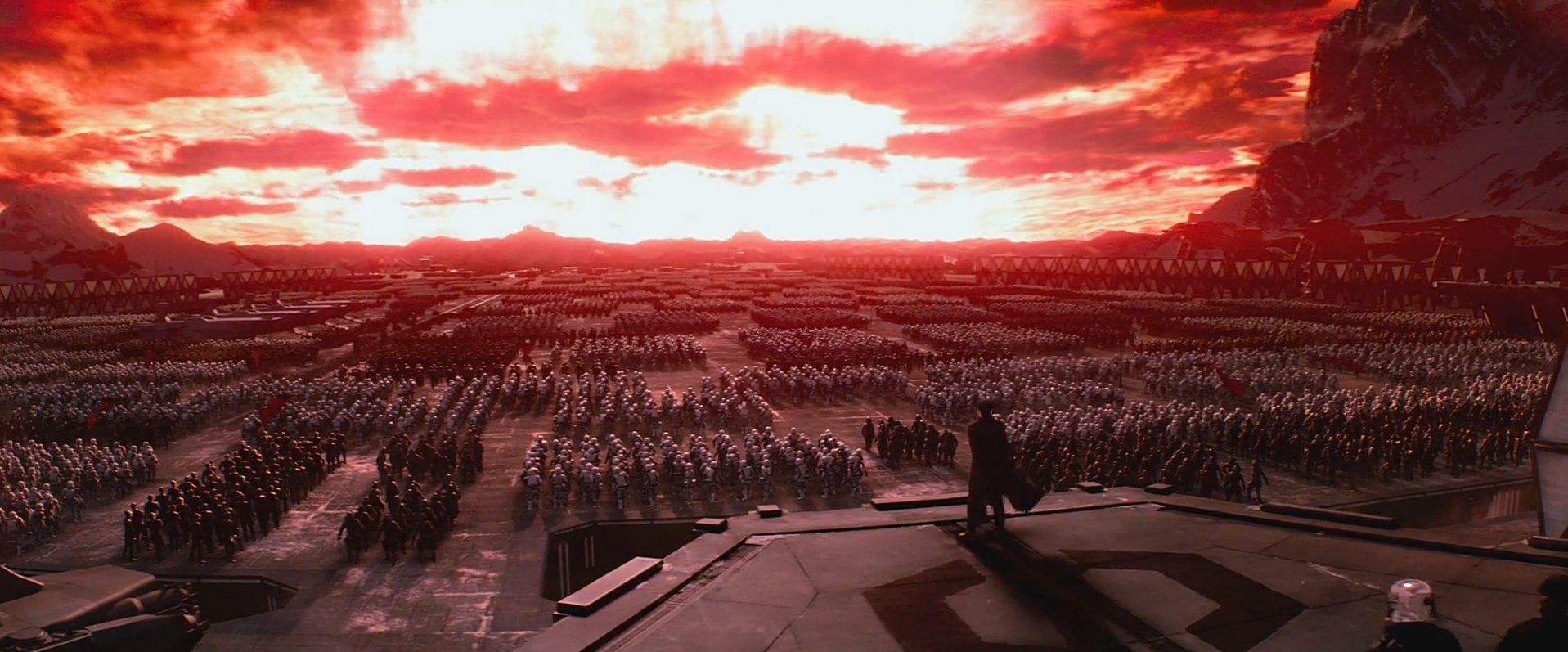
Influenced by the Imperial Era, the First Order sought to rule the galaxy as the Empire's successor.
Although the Empire fell, an Imperial remnant sought to overthrow the New Republic and reorganized into the First Order, a military-controlled state similar to the Empire. It eventually destroyed the New Republic and started a war with the Resistance, an opposing military force created by Leia Organa.
The "Old Empire era" created a legacy that left the galaxy politically divided, with Populists rejecting the degree of authority and control that characterized the Old Empire, while the Centrists supported some aspects of the Imperial system which they viewed as necessary to maintaining peace and order. Organa rejected any argument in defense of the Empire that annihilated her homeworld of Alderaan. However, her son Kylo Ren, a former Jedi who became a First Order warlord, regarded the Imperial Era as an age of stability and the Empire a force for progress. His rival, General Armitage Hux was also a strong supporter of the First Order's cause, having developed an admiration for the power of the Empire since childhood.
- LEGO Star Wars: Build Your Own Adventure